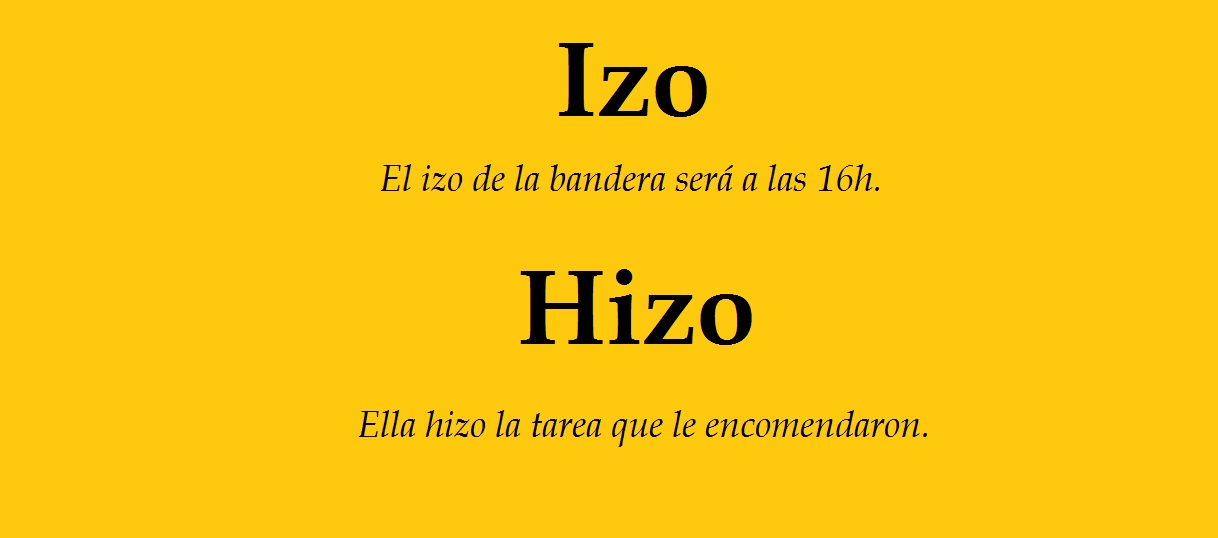Unraveling The Mystery Of Hiso O Hizo: Understanding Their Significance
In the realm of language and culture, certain phrases hold a deeper meaning that transcends mere words. "Hiso o hizo" is one such expression that has sparked curiosity among linguists, students, and language enthusiasts alike. This article aims to delve into the nuances of the phrase, explore its origins, and its implications in daily conversation. By understanding "hiso o hizo," we can appreciate the richness of language and its power to convey complex ideas in simple terms.
Language is a living entity, constantly evolving and adapting to the needs of its speakers. The phrase "hiso o hizo" serves as a perfect example of this evolution, as it highlights the intricacies of verb conjugation in the Spanish language. Whether you are a native speaker or a learner, grasping the distinctions between similar terms can enhance your communication skills and deepen your understanding of the language. This article will guide you through the various facets of "hiso o hizo," making it accessible and engaging for everyone.
As we embark on this exploration of "hiso o hizo," we will also consider the cultural and contextual factors that influence its usage. From colloquial conversations to academic discussions, the importance of understanding such phrases cannot be overstated. Whether you are interested in improving your Spanish proficiency or simply curious about linguistic expressions, this article promises to provide valuable insights into the world of "hiso o hizo."
What is the Meaning of Hiso o Hizo?
"Hiso o hizo" refers to the confusion between two similar-sounding verbs in Spanish: "hizo" and "hiso." While "hizo" is the third person singular form of the verb "hacer," which means "to do" or "to make," "hiso" is a common misspelling or mispronunciation. Understanding this distinction is crucial for effective communication in Spanish-speaking contexts.
How to Use Hizo in Sentences?
To properly use "hizo" in sentences, consider the following examples:
- Él hizo su tarea antes de salir. (He did his homework before going out.)
- La chef hizo una deliciosa cena. (The chef made a delicious dinner.)
- ¿Quién hizo la presentación? (Who did the presentation?)
When Should You Avoid Using Hiso?
Since "hiso" is not a correct term in Spanish, it should be avoided in both spoken and written language. Instead, always opt for "hizo" when referring to the past tense of "hacer." Using "hiso" can lead to misunderstandings and may come across as uneducated or careless.
Who Uses Hiso o Hizo in Everyday Conversation?
Understanding "hiso o hizo" is not only for language learners but also for native speakers. Many people, particularly children or those who are not well-versed in grammar, may confuse these terms. As a result, it’s essential for parents, educators, and language enthusiasts to address these common errors.
How Can You Improve Your Spanish Skills Related to Hiso o Hizo?
Improving your Spanish skills regarding "hiso o hizo" requires practice and exposure. Here are some tips:
- Engage in conversations with native speakers.
- Read Spanish literature to see proper usage in context.
- Practice verb conjugations with exercises and quizzes.
What Resources Are Available for Learning?
There are numerous resources available for those seeking to improve their understanding of Spanish grammar, including:
- Online language learning platforms like Duolingo or Rosetta Stone.
- Spanish grammar workbooks.
- Language exchange programs where you can practice with others.
Is There a Historical Context Behind Hiso o Hizo?
While "hiso" itself does not have a historical context, the confusion between verb forms highlights the complexities of language evolution and the impact of regional dialects. Understanding the roots of these terms can provide insight into how language changes over time.
How Do Dialects Affect the Use of Hiso o Hizo?
In different Spanish-speaking regions, dialects may influence the pronunciation and usage of various words, including "hizo." Some dialects may have unique expressions or variations that could lead to further confusion, making it essential to be aware of local language nuances.
What Are the Common Mistakes with Hiso o Hizo?
Common mistakes related to "hiso o hizo" include:
- Using "hiso" instead of "hizo" in conversation.
- Mispronouncing "hizo" due to regional accents.
- Confusing other similar-sounding verbs.
Conclusion: Why Understanding Hiso o Hizo Matters?
In summary, understanding the phrase "hiso o hizo" is essential for effective communication in Spanish. By recognizing the differences between these terms, language learners and speakers can avoid common pitfalls and enhance their proficiency. Language is a powerful tool that shapes our interactions, and mastering its intricacies can open doors to new opportunities and connections.
Discovering The Secrets Of Palworld: What Pal Will Garden?
Empowering Humanity: The Journey To Innoculate The World
Discovering The Enigma Of White Bird Rio


